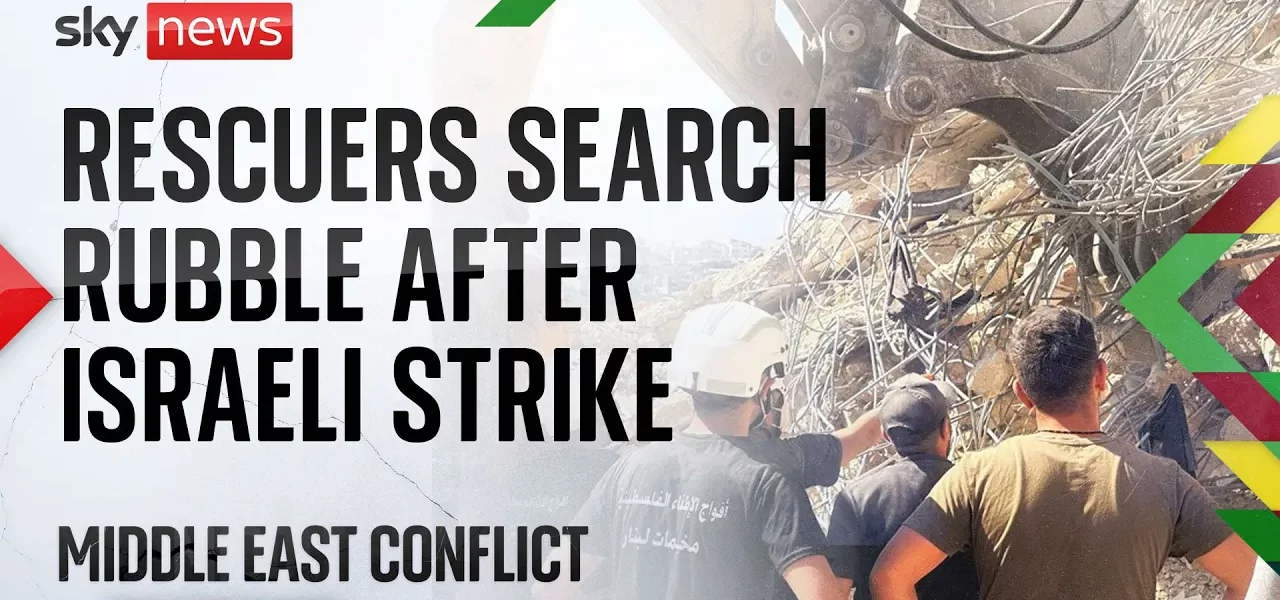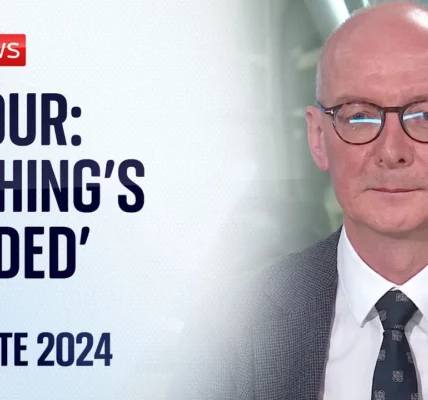Devastating Attacks in Lebanon: A Humanitarian Crisis Unfolds

This article delves into the recent Israeli attacks in Lebanon, focusing on the impact on civilians, remarkable survival stories, and the growing humanitarian crisis resulting from the ongoing conflict.
Introduction
In recent weeks, the Lebanese village of Sidon has been the focal point of devastating airstrikes carried out by Israeli forces, leading to the destruction of residential blocks and significant loss of life. As rescuers sift through the rubble, the haunting cries for help from beneath the debris echo the urgency of the situation. This article provides an in-depth look at the human stories emerging from this tragedy, the ongoing military actions, and the implications for the Lebanese people amidst a deepening humanitarian crisis.
The Impact of Airstrikes on Civilians
The recent airstrikes have transformed once-thriving neighborhoods into pancake-like heaps of rubble, packed with the remnants of homes and shattered lives. The Israeli military claims that these operations are aimed at dismantling Hezbollah’s military infrastructure, yet the civilian casualties tell a different story.
Casualties and Survivors
Many families have been torn apart, and the number of casualties continues to rise. Among the survivors is a young man who live-streamed his pleas for help while trapped under the debris. His story is just one of many that highlight the personal toll of these military actions:
- A total of 40 individuals were reported trapped during a particularly deadly attack.
- Survivors like the 19-year-old Zab have endured not only physical injuries but also the emotional trauma of losing loved ones.
- Many families have been completely wiped out, with entire households lost in the chaos.
Destruction of Homes and Infrastructure
The aftermath of the airstrikes has left two residential blocks in ruins, exacerbating the already dire humanitarian situation. Residents had fled from bombings further south, seeking refuge only to find themselves victims of new attacks.
Eyewitness Accounts
Eyewitnesses recount the chilling moments leading up to the strikes:
- Residents heard multiple airstrikes before the buildings collapsed.
- Public health officials have reported that medical staff are overwhelmed by the influx of casualties.
- Rescue operations have been slow and perilous, often hindered by the danger of further attacks.
The Broader Context of the Conflict
The current wave of violence marks a significant escalation in the Israeli-Lebanese conflict. The Israeli Defense Forces (IDF) have indicated that their operational scope is widening, targeting not only Hezbollah but also other factions within Lebanon.
Military Operations and Ground Troop Movements
Israeli leaders have hinted at a possible ground incursion into Lebanon, with troop movements observed along the southern border:
- Israeli Special Forces are reportedly conducting limited raids inside Lebanon.
- The IDF has stated that they are prepared to use all available resources, including air, sea, and land forces.
Reactions from Hezbollah
In response to the escalating conflict, Hezbollah has signaled its readiness for ground engagement, raising concerns about a prolonged military confrontation:
“We are prepared if the Israelis decide to enter by land,” stated a Hezbollah representative, emphasizing their readiness to defend against any incursions.
The Humanitarian Crisis in Lebanon
The ongoing attacks have led to a growing humanitarian crisis, with thousands in need of urgent assistance. The overwhelming grief felt by the Lebanese people is palpable, as entire families have been lost in the violence.
The Role of International Community
As the situation worsens, the international community faces mounting pressure to address the crisis:
- Calls for an end to arms supplies to Israel are growing.
- Western countries are criticized for their inability to mediate and bring about a ceasefire.
Medical and Humanitarian Aid Challenges
Medical personnel on the ground are facing significant challenges, including:
- Fear of attacks on medical facilities and personnel.
- A shortage of medical supplies and resources to treat the wounded.
- Increased psychological distress among both survivors and responders.
Conclusion
The recent airstrikes in Lebanon have not only resulted in tragic loss of life but also highlight the urgent need for humanitarian assistance and intervention. As the situation continues to evolve, it is crucial for the international community to recognize the human cost of these military operations and work towards a peaceful resolution. We encourage readers to stay informed and advocate for the protection of civilians in conflict zones. For more information on the ongoing situation and humanitarian efforts, please visit our related articles.
“`




